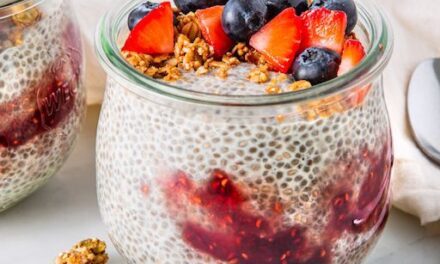As parents and caregivers, ensuring our children eat nutritious and balanced meals is a top priority. But with so much information available online, it’s easy to feel overwhelmed. Thankfully, the Canada Food Guide offers clear, age-appropriate recommendations tailored to help children grow up healthy and strong.
In this blog, we’ll break down what children really need to eat, according to the latest guidelines. You’ll also find helpful tips, meal planning suggestions, and solutions to common mealtime challenges.
What is the Canada Food Guide and Why Is It Important for Kids?
The Canada Food Guide is a government-issued resource created by Health Canada to promote healthy eating habits across the country. It’s designed to help Canadians make informed food choices—and it’s especially important when it comes to growing kids.
Children have specific nutritional needs for their developing bodies and minds. The food guide emphasizes:
- Eating a variety of healthy foods each day
- Plenty of fruits and vegetables
- Protein-rich foods (including plant-based options)
- Whole grain foods
- Drinking water instead of sugary drinks
How Much Should Kids Eat? Understanding Portion Sizes by Age
Nutritional needs vary by age. Here’s a general breakdown:
Ages 2–3 (Toddlers)
- Small portions: They have small stomachs, so offer food frequently throughout the day.
- Focus on colourful veggies, soft fruits, mashed grains, and full-fat dairy.
Ages 4–8 (Preschool and Early Elementary)
- Balanced plates: Half fruits and vegetables, a quarter whole grains, and a quarter protein.
- Introduce variety and textures to develop their palate.
Ages 9–13 (Tweens)
- More calories, more nutrients: They need more food as they grow.
- Keep meals balanced and add healthy snacks.
Tip: Use the “Eat Well Plate” visual from the food guide to help kids understand what their plate should look like.
What Should Be On a Child’s Plate? A Closer Look at Key Food Groups
1. Vegetables and Fruits – Half the Plate
- Provide fibre, vitamins, and minerals.
- Offer a mix of colours: carrots, broccoli, berries, bananas.
- Use creative presentations like fruit skewers or veggie dips.
2. Whole Grain Foods – One-Quarter of the Plate
- Choose whole grains over refined grains: brown rice, whole wheat pasta, quinoa, oats.
- They give long-lasting energy for school and play.
3. Protein Foods – One-Quarter of the Plate
- Include lean meats, eggs, dairy, tofu, legumes, nuts, and seeds.
- Plant-based proteins like lentils and beans are highly encouraged by the guide.
4. Healthy Fats
- Important for brain development.
- Include foods like avocados, olive oil, fatty fish (like salmon), and nut butters.
What About Drinks? Healthy Beverage Choices for Kids
- Water should be the main drink.
- Milk (preferably unsweetened and low-fat for older kids) is a good source of calcium and vitamin D.
- Avoid sugary drinks like soda and fruit juices—these contribute to obesity and tooth decay.
Solution: If your child refuses plain water, try adding a slice of lemon, cucumber, or berries for a fun twist!
Common Mealtime Challenges (And How to Solve Them)
My Child Is a Picky Eater!
Solution: Offer small portions, avoid forcing food, and try the same item prepared differently. It can take 8–15 tries before a child accepts a new food.
My Kids Want Junk Food
Solution: Teach them to enjoy treats in moderation. Focus on education, not restriction. Make healthier versions of favourite snacks.
No Time to Cook Every Day
Solution: Prep meals in advance. Use batch cooking, lunchbox-friendly foods, and freezer meals. Involve kids in meal planning—they’re more likely to eat what they helped make.
How to Encourage Healthy Eating Habits from an Early Age
- Eat together as a family when possible.
- Let kids help shop, cook, and serve.
- Be a role model—eat the same healthy foods.
- Avoid using food as a reward or punishment.
Bonus Tip: Make food fun! Use cookie cutters for sandwiches, or create food art with fruits and veggies.
Are Supplements Necessary for Kids?
For most healthy children, a balanced diet will provide all the necessary nutrients. However, some children may need supplements, such as:
- Vitamin D, especially in the winter months
- Iron, if your child follows a vegetarian diet
Always consult with your pediatrician before introducing any supplements.
Quick and Healthy Meal Ideas for Kids
- Breakfast: Oatmeal with berries and a glass of milk
- Lunch: Whole grain wrap with chicken, hummus, and veggies
- Snack: Apple slices with almond butter
- Dinner: Baked salmon, quinoa, and steamed broccoli
Conclusion: Empower Your Child With Healthy Choices
Understanding the Canada Food Guide for Kids can make feeding your child easier, healthier, and less stressful. By building well-balanced meals and modelling healthy habits, you’re setting your child up for a lifetime of wellness.
Remember, nutrition isn’t about perfection—it’s about consistency and variety.
FAQs: Canada Food Guide for Children
Q1: How can I encourage my child to eat more vegetables?
A: Make vegetables visually appealing, serve them with dips, involve your child in cooking, and be a role model by eating veggies yourself.
Q2: Can I use the adult Canada Food Guide for my child?
A: The core principles apply, but children have different portion sizes and nutritional needs. Always adjust based on age and activity level.











